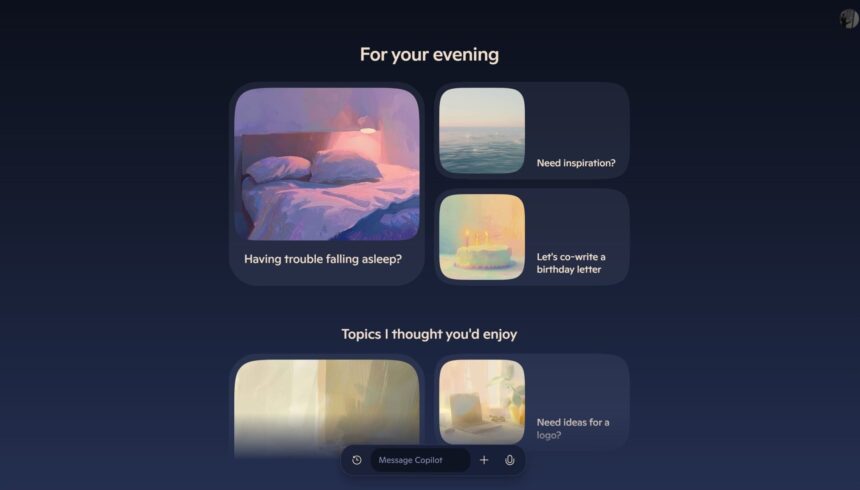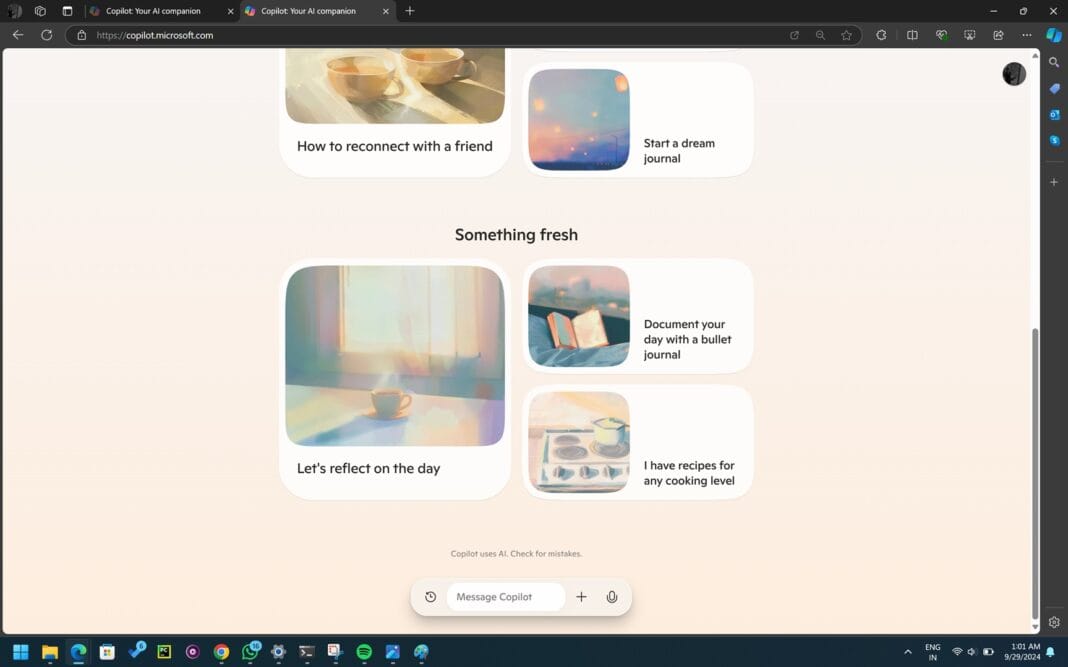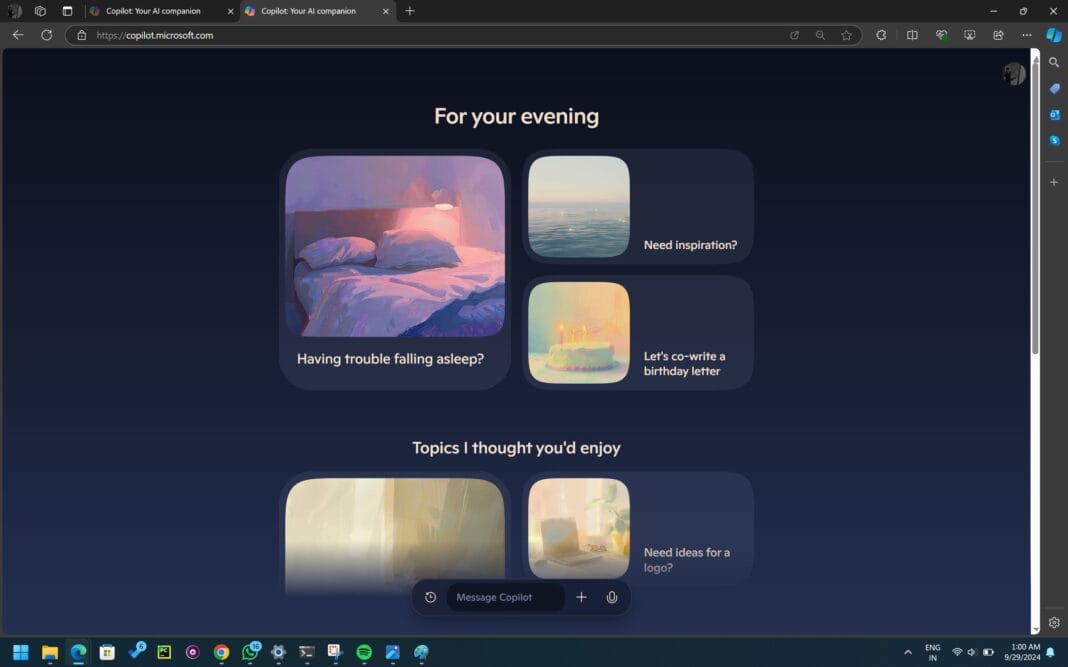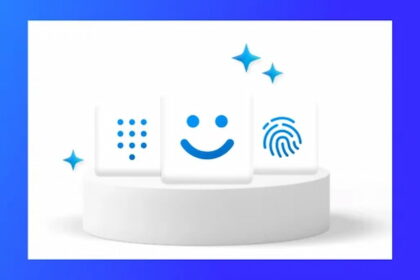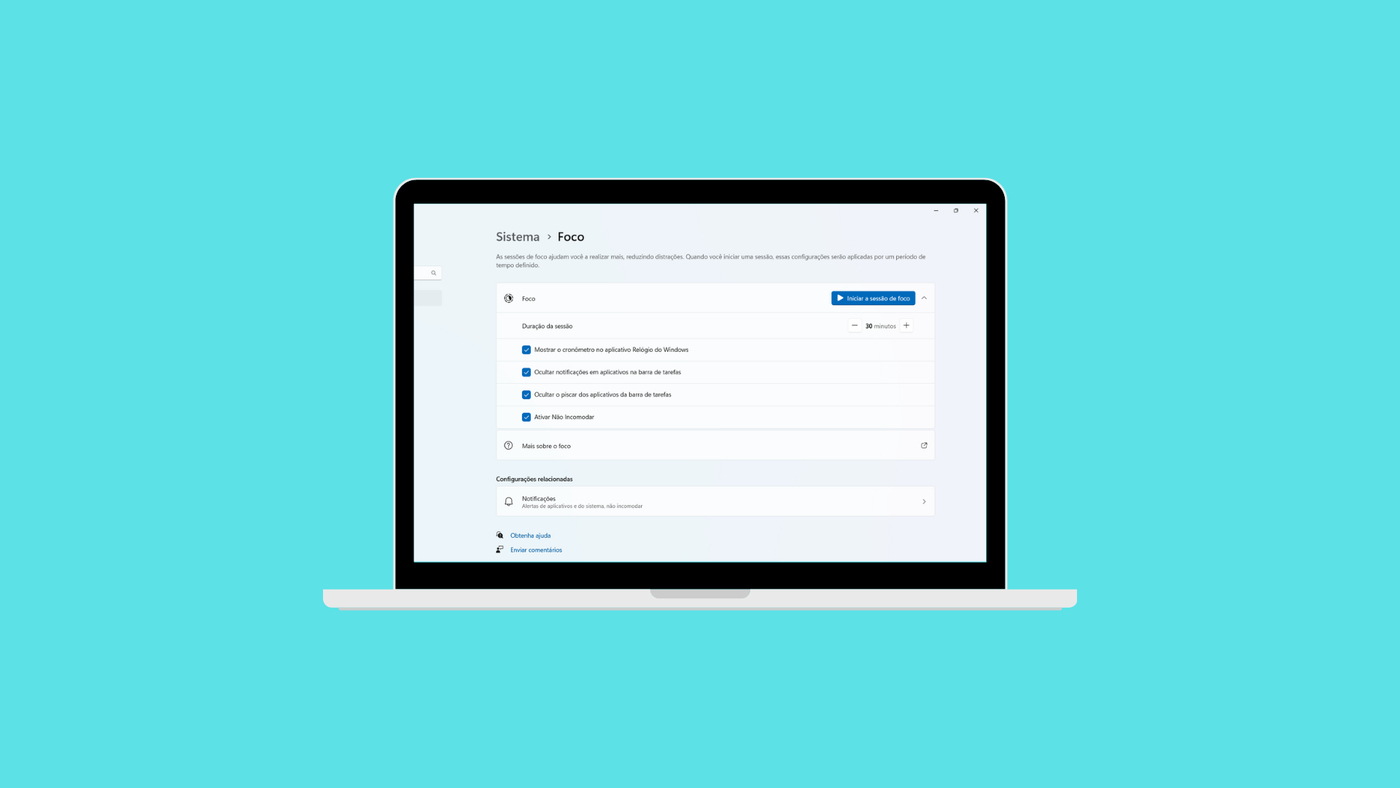Microsoft Copilot, the company’s AI chatbot powered by ChatGPT technology, is about to receive its most significant update since its initial release. Users worldwide have noticed a new Copilot web application with an updated interface that feels faster and more optimized than previous versions. According to reports from Windows Latest, this revamped version introduces new functions that enhance usability and performance.
For those familiar with ChatGPT and Copilot, it’s clear that it has lagged behind over time. While ChatGPT has continued to evolve, incorporating more advanced models and offering a swift, intuitive interface, Copilot’s web and mobile applications have felt slower and less creative, primarily due to their reliance on the older GPT-3.5 model.
The upcoming update could address these issues, potentially making Copilot more competitive and efficient in delivering creative and accurate responses, especially as it aligns with the advancements seen in ChatGPT. This transformation might also bring a better user experience, positioning Copilot as a more dynamic AI tool.
Microsoft Copilot 2.0: a beautiful and optimized experience
The new Copilot application, available for both web and mobile platforms, is designed to address the issues plaguing earlier versions. Upon opening the updated app, users are greeted with a setup screen that asks for their name, followed by an option to log in with a Microsoft account (though this step is not mandatory).
One of the most notable new features is the variety of voice options for Copilot. Users can choose from four distinct voices: “Meadow,” “Grove,” “Wave,” and “Canyon.” These voices add personalization to the AI experience, with more voice options expected to be introduced in the coming months, allowing for even greater customization.
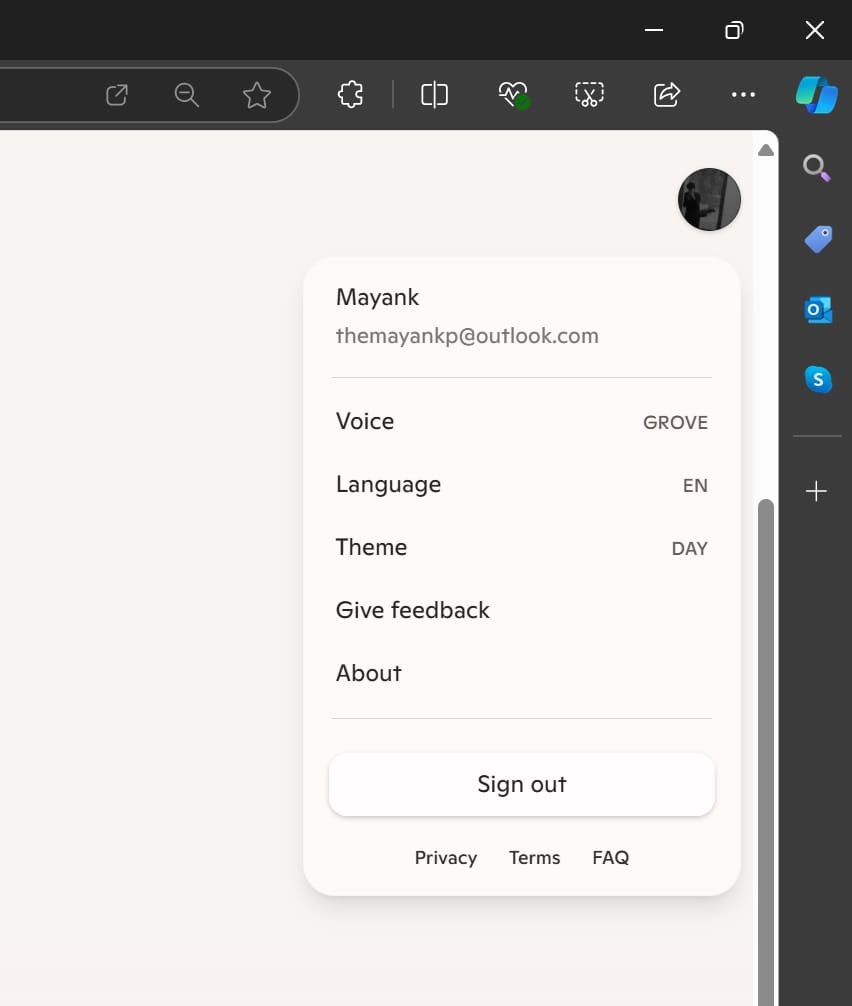
The new Copilot interface introduces a more intuitive design, using rounded cards that suggest different ways users can interact with the AI. This approach is especially useful given that many users are still unfamiliar with the full potential of this technology and may struggle with creating effective prompts. The new design helps guide users through these possibilities, making the experience more accessible.
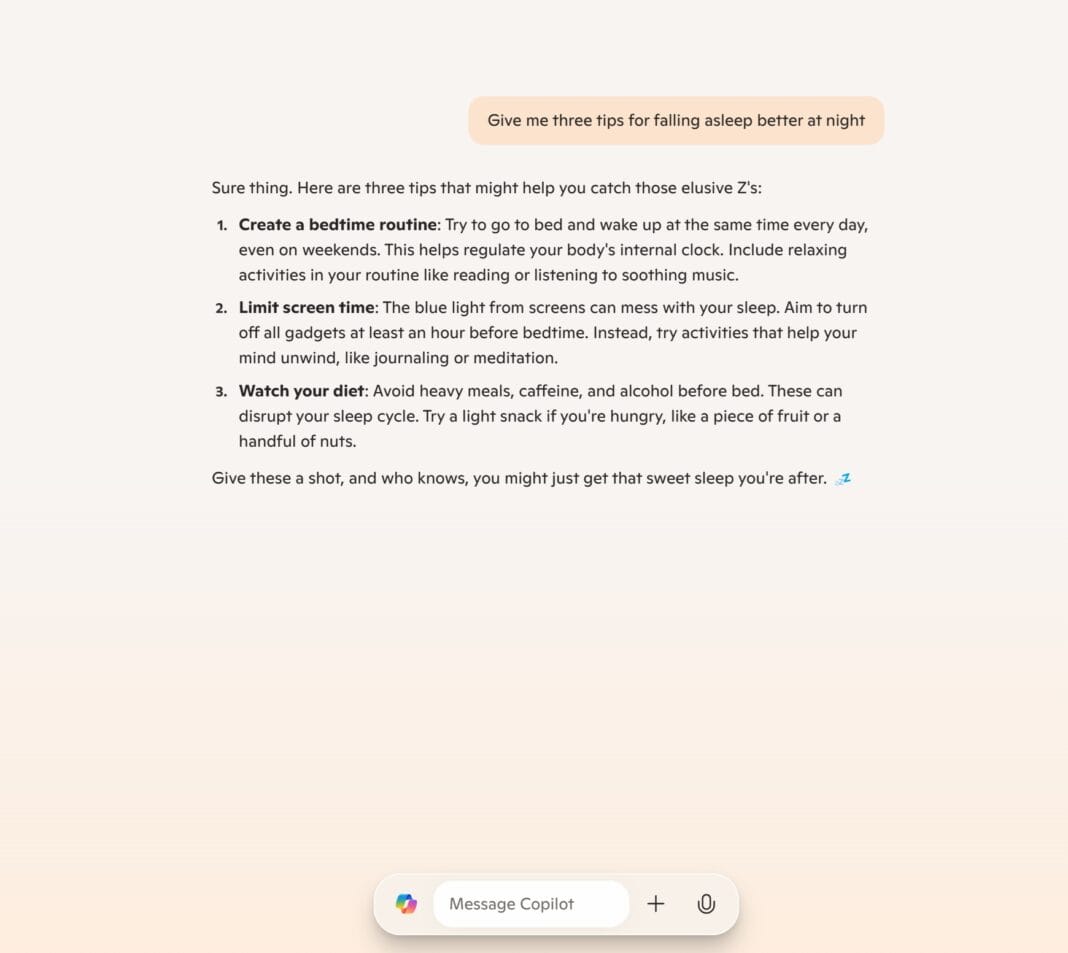
The interface includes light and dark themes, with a more polished and aesthetically pleasing look than previous versions. The dark theme features a gradient navy blue, while the light theme showcases a soft pastel yellow, adhering to the Fluent design principles and incorporating materials like Acrylic.
The input bar for entering text remains permanently visible, with options to attach files and use voice input, similar to the current version.
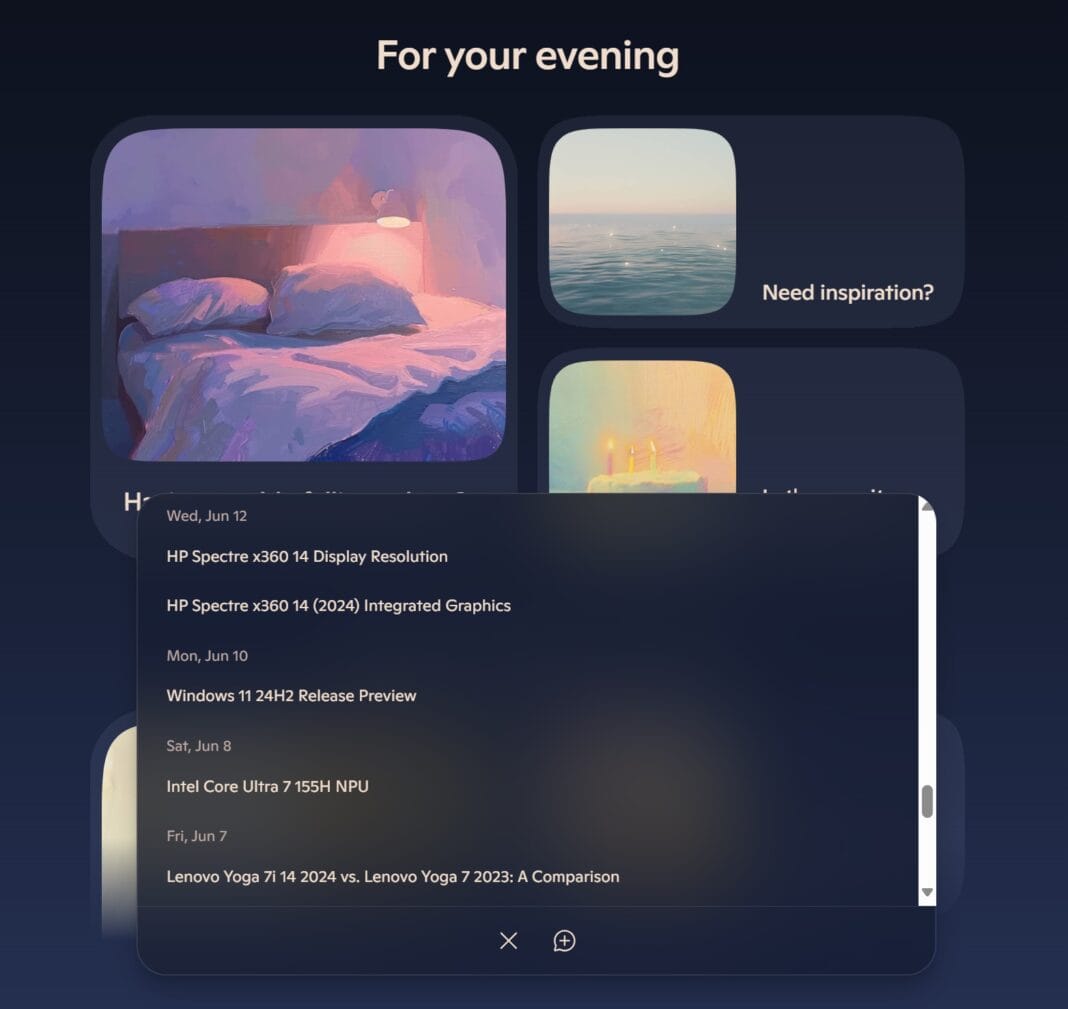
One of the most exciting updates is the expected switch to GPT-4, ensuring faster and more accurate responses. As noted by Windows Latest, the upcoming features for Copilot include:
- A new mobile app for iOS and Android reflecting these improvements (as hinted by Tom Warren).
- Integration of GPT-01, OpenAI’s latest model.
- Plugins or extensions for system updates.
- The ability to upload files directly to the platform.
Microsoft seems fully committed to enhancing Copilot, striving to deliver a user experience that finally meets the expectations associated with its brand. The success of these efforts remains to be seen, but the improvements are promising.

